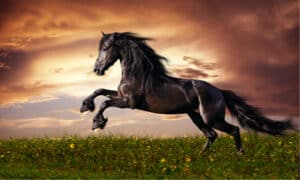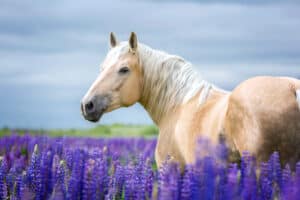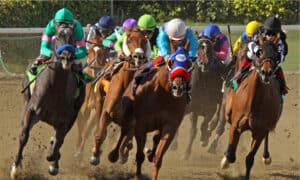Piebald horses are a widely popular horse color with a distinct black-and-white look. Not specific to any particular breed of horse, piebald coloring in horses depends a lot on genetics. Typically, piebald horses have white splotches on a black background. While a piebald horse may have a pigmented or non-pigmented dark coat, the white spots always display no pigment. In British English, the term skewbald is used for horses with white coats combined with any color besides black. Learn more about piebald horses, including their origins, terminology, and rarity.
Origins of the Piebald Horse
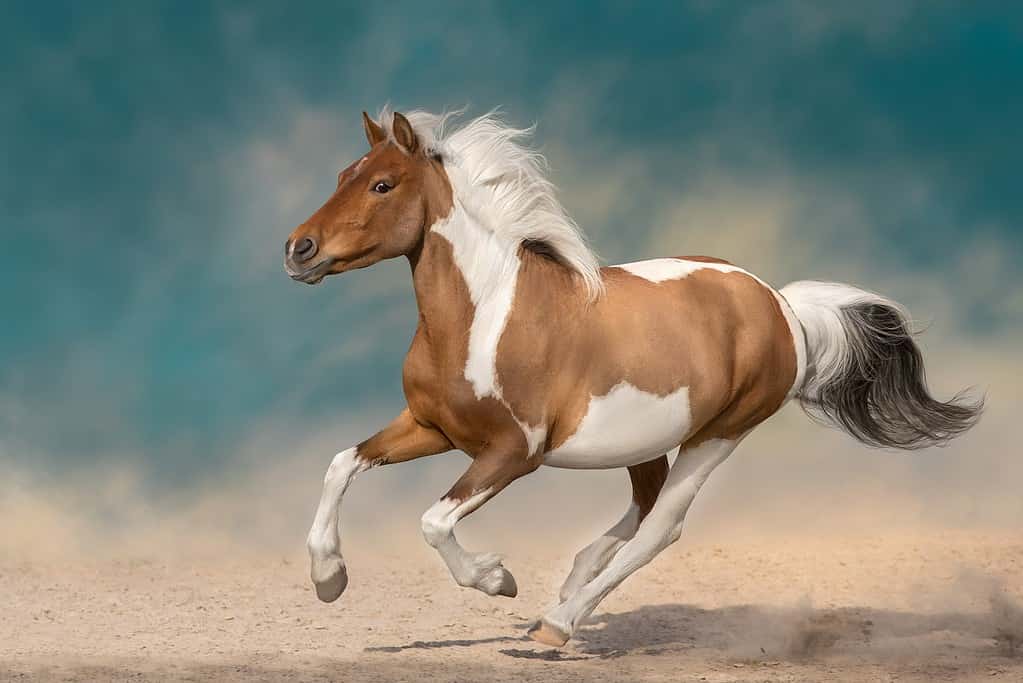
Without the genes to make them piebald, piebald horses would be a solid color.
©Kwadrat/Shutterstock.com
Evidence of horses with white spotted coats goes back to ancient times, with depictions on pottery and other art. Although once very popular in Europe, spotted horses eventually lost their attraction. Many horses with white spotted coats went to the Americas. In the Americas, these spotted, or ‘pinto’ horses became very popular among Native Americans, and today, the largest number of spotted horses exist in the United States. The horses brought from Europe arrived with Spanish conquistadores but most likely originated from horses of Arabian ancestry.
Terminology
The term piebald originates from the United Kingdom, while pinto is the American English equivalent of the same color horse. Piebald combines the terms ‘pie’ and ‘bald.’ The pie comes from the word magpie, linked to the bird’s distinctive black and white feathers. ‘Bald’ means ‘streaked with white’ and is obsolete on its own .
Pinto comes from a Spanish word literally meaning “spotted or mottled.” Pinto typically only refers to a black and white horse in America. People describe other color combinations in specific terms. For example, a buckskin horse with white splotches would be a buckskin pinto.
Are Paint Horses the Same as Piebald Horses?
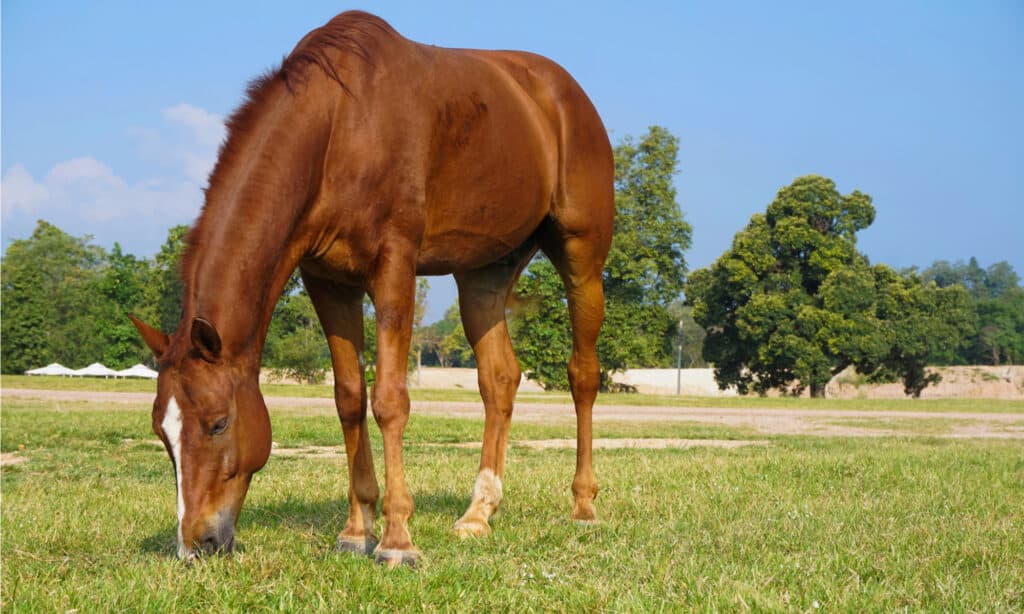
Solid-colored horses can register as American Paint Horses if their parents were registered as Paints.
©Wynn Dhyana/Shutterstock.com
When it comes to genetics, both paint and pinto horses are the same as piebald horses. Horse owners in the U.S. use the term pinto for any breed of horse with a mottled coat.
However, when speaking about horses amongst breeders, paint horses typically refer to horses with American Quarter Horse or Thoroughbred ancestry. These horses are collectively registered as a horse breed called the American Paint Horse. A horse bred in England or elsewhere with a black and white mottled coat is more likely to carry the name “piebald” unless it has bloodlines related to Thoroughbreds or American Quarter Horses, which would make it eligible for registration as an American Paint Horse.
Are Appaloosa Horses the Same as Piebald Horses?
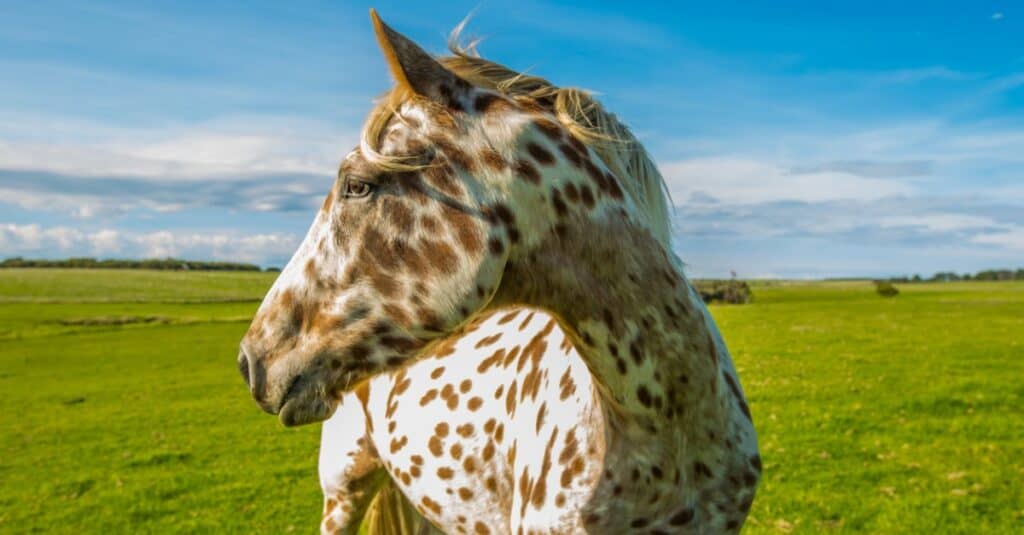
Appaloosa horses have coats with a mixture of white and another color, which differs from the larger patches displayed on piebald horses.
©iStock.com/Anara55
No, Appaloosas display distinct leopard spotting that is unrelated genetically to piebald genetics. The dramatic spotting on the Appaloosa can easily be mistaken for a piebald pattern, but the white spots are usually too small and irregular.
Which Breeds of Horses Can Be Piebald?
Any breed of horse can be piebald because the color does not belong to one breed alone. Piebald horses, however, commonly appear in breeds like the Gypsy Vanner and American Paint Horse. Gypsy Vanners do not have to be black-and-white piebalds, but that is their most distinctive characteristic.
Certain breeds in the United Kingdom, like the Welsh Pony, might be born as piebalds. However, piebald horses might not be officially recognized in the breed specifications.
How Rare Are Piebald Horses?
Thanks to domestication, piebald coloring commonly appears in various horse breeds around the world. The genetics that create the distinctive white spots can pop up in breeds around the world. Certain breeds get associated more often with a piebald coat, including the American Paint Horse, which typically must have white spots present to be registered.
Piebald horses appear much more commonly than piebald animals of other species, most likely due to selective breeding. Many breeders desire the piebald look, especially if they are breeding Gypsy Vanners or American Paint Horses. Researchers completing extensive studies of genetics help breeders determine the pattern of piebald coloring they might get from crossing two horses.
Piebald Horse Genetics
A horse’s coat does not get a mottled color from one gene alone. A variety of genes come into play to provide the unique look of a piebald horse, including the gene that indicates the base coat. Many piebald horses have genes for a black base coat, which gives them their black color. Foals turn out piebald if they receive another gene that takes away pigment in spots, typically in different kinds of patterns. The most common pattern is tobiano, followed by overo and tovero patterns.
Tobiano
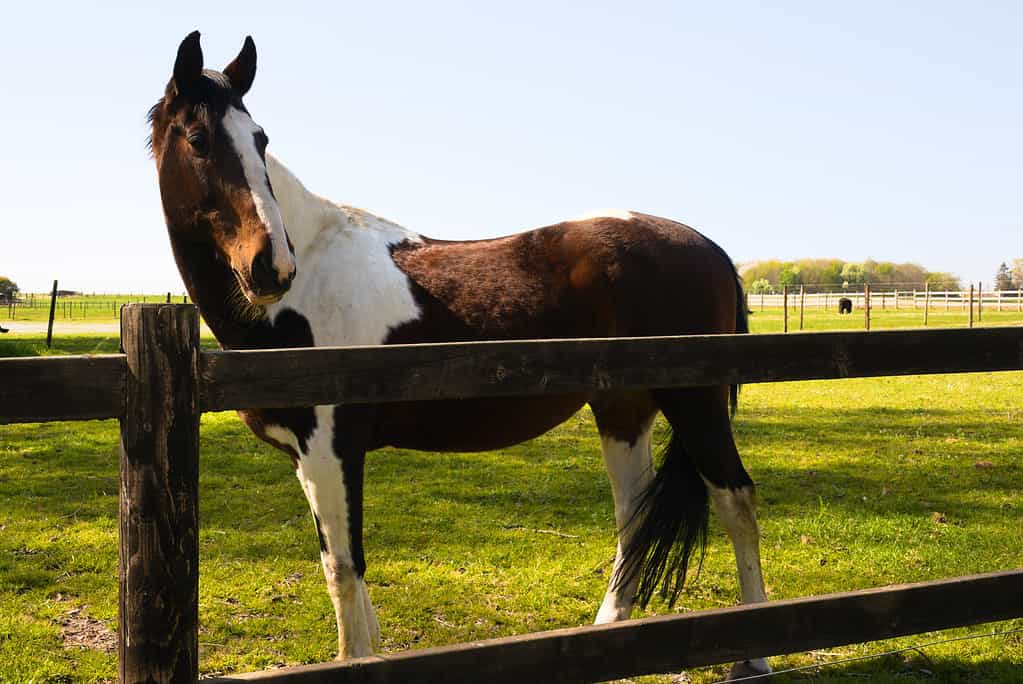
White spots on tobianos will extend down the back, down the legs, and elsewhere in rounded shapes.
©ldc_foto/Shutterstock.com
Tobiano horses inherit their pattern from at least one tobiano parent. A horse with tobiano markings might display a combination of the following characteristics:
- White legs from the knees down.
- White crossing the back between the withers and the dock of the tail.
- White spots on the body have a vertical orientation.
- Small facial markings such as star, snip, strip, or blaze (more extensive white facial markings might indicate other gene influence).
- White patches with a rounded or oval shape.
- Dark color extending down the neck like a shield, not broken up with other spots of white.
Overo
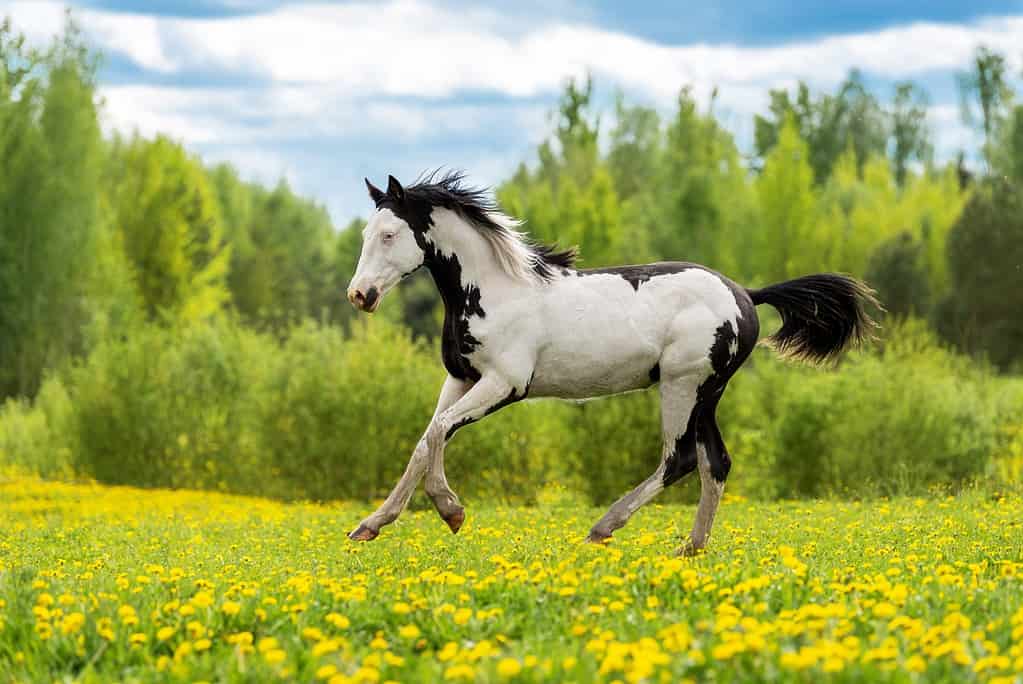
A typical overo pattern gives a horse large white spots with a darker color frame.
©Rita_Kochmarjova/Shutterstock.com
Horses with overo patterns fall into three different types: frame overo, splash overo, and sabino. The most common pattern, frame overo, features irregular white splotches that appear “framed” by the darker coat. Horses with splash overo, the least common overo pattern, look like they have been dipped in white paint. Sabino horses have very little white, with white extending up to the knees, across the entire face, and some irregular splotches on the belly.
Tovero
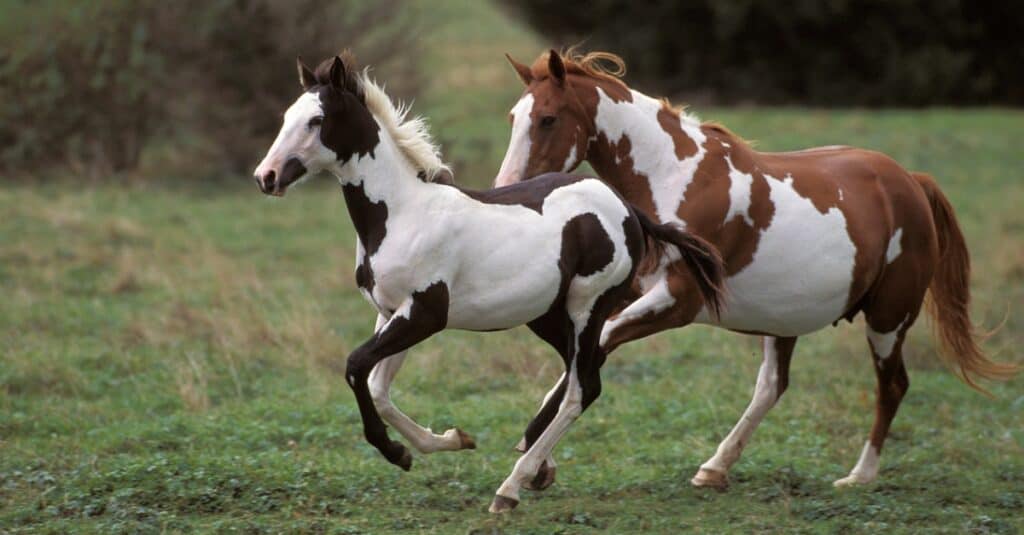
Much is still unknown about the genes that create tobiano, overo, and tovero patterns in white-spotted horses.
©iStock.com/slowmotiongli
Tovero is the name for a horse displaying white markings characteristic of both the tobiano and overo patterns. The mixture of patterns depends on genetics, which makes the white markings very random.
The photo featured at the top of this post is © Rita_Kochmarjova/Shutterstock.com
Thank you for reading! Have some feedback for us? Contact the AZ Animals editorial team.




